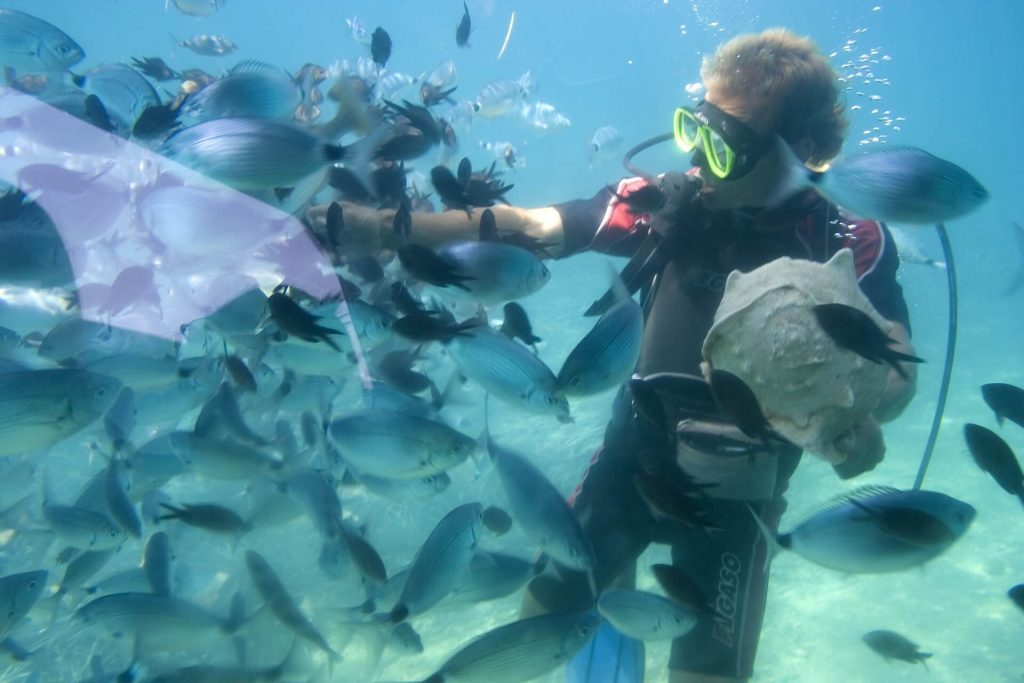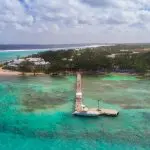It’s totally understandable if you’re feeling nervous about Cayman diving. In fact, scuba diving has an excellent safety record in Grand Cayman and is considered a low-risk activity in general.
Any serious risks associated with diving can be easily avoided by following safe and correct diving practices. Red Sail Sports is the largest, longest-standing diving company on Grand Cayman, and safety has always been our first priority. We have done all the worrying for you!
In this blog, we outline the main risks of scuba diving and the ways that our practices ensure that any risks are minimal.
1. The most common risk to Grand Cayman divers: sunburn and dehydration
When participating in an exciting sport, it is easy to forget the basics. Regardless of your skin type, apply high-factor reef-safe sunscreen as it can be easy to forget the power of the sun when on the water.
Similarly, because you are surrounded with water it can be easy to underestimate the importance of correct hydration. Dehydration is a contributing factor for decompression sickness.
Drink a glass of water every 15-20 minutes in the hours before your dive and continue after you have finished your dive. Drink at least 2 litres extra to what you would normally drink each day. Don’t forget to reuse your bottle to help reduce encounters with plastic while diving!

2. Why do Grand Cayman divers need training?
One of the most important reasons that scuba diving has a good safety record is that all divers, in any location worldwide, must be trained.
Certified diving courses ensure you know how to avoid unbalanced ear pressure, improper breathing, and decompression sickness, which are where most of the risks in scuba diving lie.
Courses also teach you how to test your equipment, prepare for anything unexpected, and manage unforeseen circumstances. Red Sail Sports accepts the following certification cards: PADI, SSI, NAUI, IDEA, PDIC, NASDS, SDI, YMCA & HSA and more.
If you have not received any kind of formal training yet, you can still join us on our Grand Cayman Discover Scuba Diving experience. This is a fun and safe way to experience scuba diving for the first time and find out what diving feels like with time in the pool followed by a 1-tank boat dive.
Once you have the taste for scuba diving, then you can get your full certification, along with several other professional courses with us at Red Sail Sports. Check out our Grand Cayman diving courses here.
3. Why you should tell the truth on your Grand Cayman diving medical forms?
Some health conditions unfortunately are incompatible with safe diving. If you suffer from any of these, do get in touch with us to discuss other ways you can experience Grand Cayman’s underwater world.
You cannot dive if you are pregnant or due to fly in the next 18 hours. Other conditions that will prevent you from diving include asthma, diabetes, middle ear problems, hypertension, and epilepsy.
Some fatalities from diving have arisen as a result of divers not telling the truth on their forms; it is crucial you do so and we would love to support you in finding other ways of enjoying your vacation here. Snorkelers are welcome on all our dive trips!

4. Does Grand Cayman have dangerous sea animals?
The short answer is no: Grand Cayman sealife poses no serious dangers to humans. We love our sharks: the Caribbean Reef Shark and Nurse Sharks. Neither are aggressive nor considered dangerous and pose no threat at all if unprovoked.
Stingrays are not interested in humans unless they are expecting to be fed around Stingray City Sand Bar. Barracudas may look large and fierce, but they are totally harmless.
The only slight risk comes from the invasive Lionfish. Although not aggressive, their venomous spines can be painful. You are only likely to encounter them in wreck dives as they rest on the ceilings and walls. We will talk you through safety measures if you are joining us on one of these dives. They are usually pretty skittish though and generally swim away from divers
It’s worth noting that while the spines are venomous, the fish is not dangerous to eat, and one of the ways the government is curbing the threat of this invasive species is by encouraging it as a delicacy: enjoy!

5. Why you should always dive in Grand Cayman with a certified and well-known provider?
Diving is a thriving business on Grand Cayman and most providers have excellent safety standards. We recommend you ask the following questions to any provider. These are essentials for us at Red Sail Sports, and we have higher standards than many.
At Red Sail Sport, we have strict guidelines, purely from a safety point of view on how recent you last dived and the next steps divers are required to do to dive with us.
- The last dive was over 1 year ago, A Refresher Course is recommended.
- The last dive was 2-6 years ago, Red Sail Sports Refresher Course is required.
- The last dive was over 6 years ago, A PADI Scuba Tune-Up Course is required.

In conclusion, diving around Grand Cayman is a low-risk activity, but you should be alert to the professionalism of your provider and to the risk-reduction essentials detailed above.
If you are still feeling anxious, it’s worth remembering that diving has fewer fatality rates than swimming or jogging. Check out the stats on risk on the PADI scuba-diving safety blog here.
If you follow our guidelines you will be set for a thoroughly enjoyable experience. Check out the many incredible Grand Cayman diving experiences here, and do get in touch for more support or advice.








